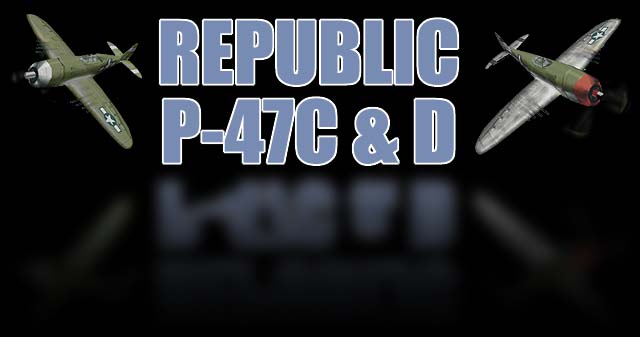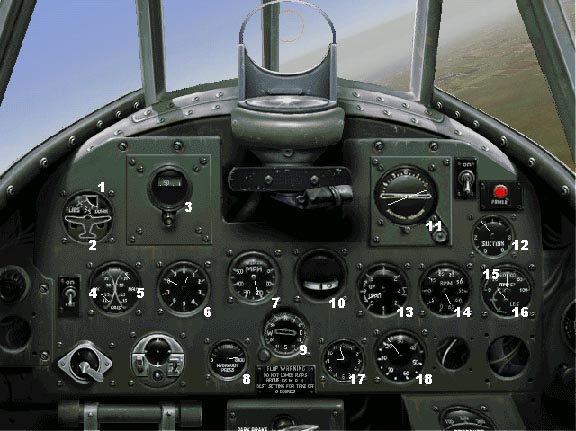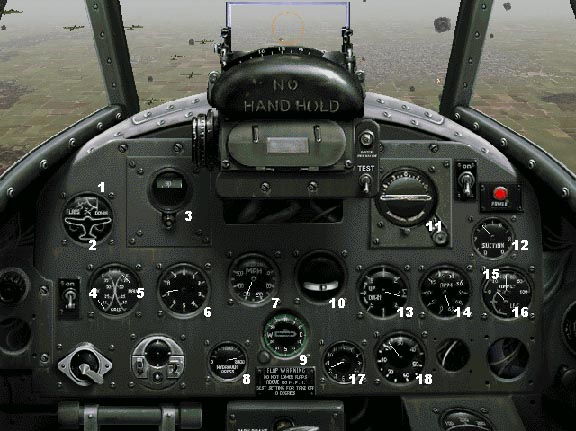
European Air War

Republic P-47C Thunderbolt
Although overshadowed in the annals of history by the P-51, the Republic P-47 Thunderbolt, also known as the "Jug," proved itself time and again in all theaters of action. The P-47 was built in larger numbers than any other US fighter in history. From 1942 until the introduction of the P-51, the P-47 was the US Army's workhorse, performing both air-to-air and air-to-ground sorties.
The Jug suffers two primary disadvantages. First, its mediocre range limits its effectiveness as a bomber escort. Late-model P-47Ds, though, can carry three external fuel tanks, allowing it to escort bombers fairly deep into Germany. Second, the P-47 maneuvers like a brick. In a dogfight, the P-47 is no match for the Bf109 or the Fw190. The P-47 bleeds energy quickly during maneuvers and pilots should avoid turning fights whenever possible.
On the other hand, the Jug's strengths more than make up for its weaknesses. First, the P-47 can absorb an unbelievable amount of damage. By mid-1943, everyone had come to respect the P-47's ability to bring its pilot home safely. Second, with eight .50 cal guns, the P-47 packs quite a punch. Third, and finally, the P-47 can dive away from any Luftwaffe opponent. It's perfectly suited for hit-and-run tactics from high-altitude.
Republic P-47C Thunderbolt

1. Flap Position Indicator
2. Landing Gear Position Indicator
3. Gyro Compass
4. Auxiliary Fuel Gauge
5. Fuel Gauge
6. Altimeter
7. Airspeed Indicator
8. Hydraulic Pressure Gauge
9. Repeater Compass
10. Turn and Bank Indicator
11. Artificial Horizon
12. Vacuum Suction Gauge
13. Rate of Climb Indicator
14. Tachometer
15. Engine Temperature Gauge
16. Oil Pressure Gauge
17. Clock
Specs
- Wingspan: 40 ft. 9 in.
- Length: 36 ft. 1 in.
- Height: 14 ft. 2 in.
- Wing Area: 300 sq. ft.
- Engine: Pratt & Whitney R-2800-63 Double Wasp rated at 2,300 hp
- Fuel: 305 gal. internal
- Loaded Weight: 13,500 lb.
- Wing Loading: 45 lb./sq. ft.
- Maximum Speed: 419 mph.
- Service Ceiling: 41,000 ft.
- Rate of Climb: 2,800 ft./min
- Combat Radius: 275 miles
- Armaments: 8 x .50 cal. Browning machine guns
- Ammunition: 425 rds/gun
Republic P-47D Thunderbolt

1. Flap Position Indicator
2. Landing Gear Position Indicator
3. Gyro Compass
4. Auxiliary Fuel Gauge
5. Fuel Gauge
6. Altimeter
7. Airspeed Indicator
8. Hydraulic Pressure Gauge
9. Repeater Compass
10. Turn and Bank Indicator
11. Artificial Horizon
12. Vacuum Suction Gauge
13. Rate of Climb Indicator
14. Tachometer
15. Engine Temperature Gauge
16. Oil Pressure Gauge
17. Clock
18. Manifold Pressure Gauge
Specs
- Wingspan: 40 ft. 9 in.
- Length: 36 ft. 1 in.
- Height: 14 ft. 2 in.
- Wing Area: 300 sq. ft.
- Engine: Pratt & Whitney R-2800-59 Double Wasp rated at 2,600 hp
- Fuel: 370 gal. internal
- Loaded Weight: 14,500 lb.
- Wing Loading: 49 lb./sq. ft.
- Maximum Speed: 436 mph.
- Service Ceiling: 40,000 ft.
- Rate of Climb: 3,200 ft./min
- Combat Radius: 315 miles
- Armaments: 8 x .50 cal. Browning machine guns
- Ammunition: 425 rds/gun
Notes: Both variants had excellent climb rates for the period and were extremely maneuverable at high altitudes. Concurrently, however, they both handled very sluggishly at low altitudes. Tactical employment of the P-47 is very similar to that of the P-38. You want to fly clean in all but Strike and Search & Destroy missions. For Strike missions, you also have dual 500lb. and 1000lb. loadouts, or a mixed loadout of two 500lb. bombs and six 4.5 inch rockets. The latter burdens the airframe such that the maneuvering characteristics are almost the same as with the dual 1000 lb. package, but the firepower differs considerably. Two 1000 lb. bombs on target cause much more damage than two 500 lb. bombs and six rocket hits, but the latter gives you more opportunity to miss. Concurrently, you do have more rounds to expend on other targets of opportunity in the area, so it really boils down to a judgment call. Again, the dual 500 lb. configuration offers the best balance between the offensive and defensive capabilities of the aircraft. For Search & Destroy missions, eight five-inch rockets is the best configuration, followed by the aforementioned dual 500 lb. bomb and rocket combination.
This material was included in the original 1998 release of European Air War by Microprose.
